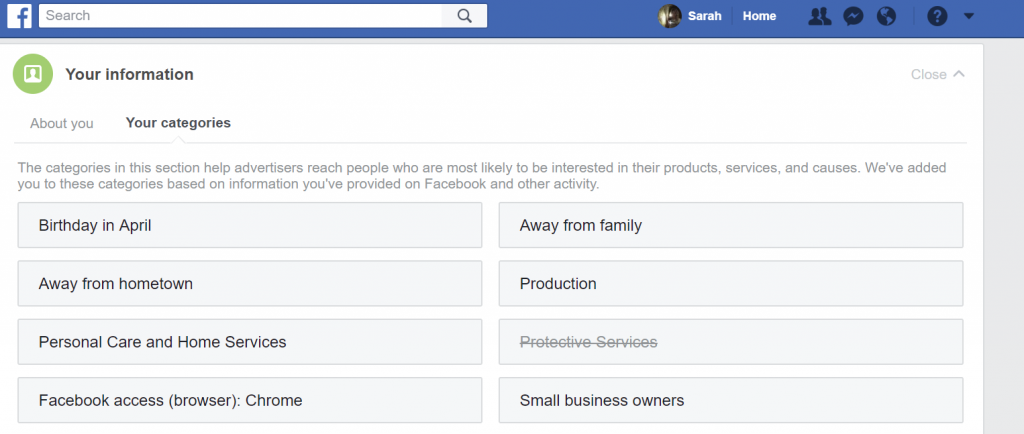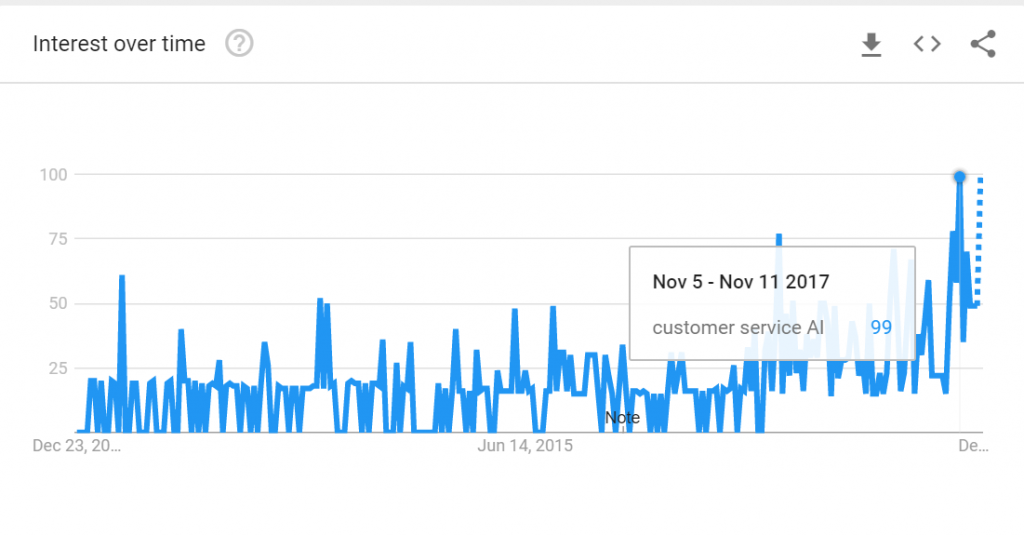For the second year in a row, I have the privilege of peering into my crystal ball and making some bold predictions of customer service trends for the year ahead.
What are my clients going to be asking about? What new and exciting technology should I research for the Nicereply blog?
To formulate my predictions of customer service trends, I look at three things:
- What new companies am I hearing about a lot? Is there a new problem or new solution we’re hearing about often? This usually points to shifts in the industry that will take place over the next year.
- What are people talking about? Looking at common conference topics, reading conversation threads in the Support Driven community and tracking Twitter threads provides great insight.
- What are other smart people predicting? Honestly, I frequently find inspiration in other people’s lists. (Blake Morgan, Mat Patterson and Daniel Hong were particularly influential to me this year.)
The future of customer service is all about improvement. In 2018, I expect companies will look to support customers more efficiently, more securely and more effortlessly. Here’s three customer service trends I’m banking on for 2018.
Advanced Customer Service Education
Elevate Summit and Support Driven’s conferences are becoming annual traditions for many customer service teams. But where do we go when we’ve learned everything we can from those conference circuits? For example, once we’ve managed a team for a couple years, we probably have a good handle on 1 on 1s, queue management and reporting. But we’re still getting our feet wet when it comes to annual forecasting and ROI prediction. Applying advanced business concepts to customer service departments isn’t something we talk about often.
Maybe this is more wishful thinking than actual customer service trends predicting, but I’m hopeful that we’ll see more advanced, specific customer service leader training in 2018.
What would something like this look like? Well, it might be more one-on-one management training from consultants like Bill Bounds. It might be more formal industry wide certification programs. Maybe customer support conferences can build in a VP level track for qualified applicants to attend. Whatever shape it takes, I’m excited to see how we keep growing our knowledge beyond frontline support experience.
If we want to keep elevating the customer service profession right into the C Suite, our best and brightest need the training and support to get there.
A focus on Customer Effort Score
We’ve written a lot about customer effort score in 2017, and the metric is only gaining popularity among customer support teams. More than 9.4% companies used CES last year, which is 118% more than in 2016.
Why is CES so popular these days? Well, customer satisfaction is higher than ever. A December 2017 AMEX study found that 81% of Americans say businesses are meeting or exceeding their expectations for service. This is up from 67% just three years ago. We’re getting really good at helping customers once they contact us.
Customer Effort Score (CES) is a better indicator of long term loyalty than customer satisfaction. It targets the entire customer experience, right from when a user experiences a problem up to issue resolution. Because you see, customers don’t actually want to talk to customer service. They don’t want to run into problems in the first place.

Instead of focussing on what to do when the customer starts a conversation, I think 2018 will be the year of making it as easy as possible to get help. And that starts with measuring CES.
Security and GDPR
This year, in one of the predictions of customer service trends, I expect we’ll see a renewed focus on customer data security led by two factors; GDPR and Big Data driven personalization. General Data Protection Regulation (GDPR) is a set of rules adopted by the European Union Parliament mean to enforce corporate responsibility in regards to consumers private data. But GDPR doesn’t just affect European businesses. Any company that has customers or users located in the EU must abide by these regulations.
The three minute video below provides a succinct overview of GDPR rules. Regulations come into effect May 2018 and non-compliance carries a fine of up to £20 Million or 4% of total business revenue.
The need for data security is amplified by the sheer amount of personalization data companies gather. In order to provide a customized experience, online businesses collect a plethora of information about their customers. Marketers know everything about you from the type of car you drive to how many pets you own. And all of this data is stored somewhere… hopefully safely! By 2020, it’s estimated that the world will produce 44 zettabytes of data every day. I could try and paint a picture of how much that is, but any comparison of size would fail.
Customer access to personal data
Customer service teams will be affected a couple ways by additional security requirements. First of all, customers have the right to access information that companies store on them. If a customer asked you for this today – would you have a way to gather it easily for them?
Many companies might look to self service to manage this. For this reason, Capterra predicts that Customer Identity and Access Management (CIAM) software will be an area of growth in 2018.
You can see this principle (as well as the right to be forgotten) in practice on Facebook. Head to your Ad settings page while logged in. Under the categories section, you can see how Facebook has grouped you into target segments based on your personal data. Don’t want to be affiliated with one of the categories? Click the “x” next to a category to be removed.

This seriously might be the most boring prediction of customer service trends I’ve ever made (last year I got to talk about robots…) but it’s also perhaps the most important. Make sure you’re talking about GDPR in your teams this year, even if it’s an unsexy topic.
A Quick Look Back at Last Year
Most of the time, people make these lists without consequences. We read them, and share them, and never go back to see if anyone was actually right.
Well, this year, I want some accountability. So I’ll quickly refer back to my predictions from last year to see how I did. Spoiler alert: not bad!
Conversations, not tickets – Partial WIN
While not entirely a definitive win, companies are definitely embracing real time conversations over email. Daniel Hong from Forrester says that “companies like Nike, Apple, Uber, Toys “R” Us, and Target have moved away from actively supporting email as a customer service contact channel.” Instead of the traditional “take a number and wait” form of customer service, we’re moving into a new era. Expect to see even more real-time options for customer service pop up in 2018.
Solution suggesting robots (AI) – WIN
I’m going to give myself a win on this one because searches for “customer service AI” massively peaked in 2017 (note: Google Trends ranks popularity on a scale from 1-100). There’s also been a whole new bunch of AI tools created for customer service teams like DigitalGenius, which just raised $14.75 million in their Series A round.
 Customer Service as a Career – WIN
Customer Service as a Career – WIN
Not only did SupConf and Elevate expand their conferences this year, there’s also new players in the customer service education field. Help U by HelpScout officially launched this year, and the Support Driven community expanded to over 2800 customer service professionals.
All Hands Support – FAIL
I’m actually not really sure how to measure this one. I do think more teams are embracing collaboration in support. But 2017 also saw articles like “Why All Hands Support will Never Work for your Business,” “Why All Hands Support Didn’t Work for Our Company” and “The Fallacy of Listening to Your Customers” which specifically say that All Hands Support isn’t the way forward. Oh well.
Overall score? 2.5 out of 4
A modest pass.
Think I did better this year with new customer service trends? I hope so! Check back next year to see how 2018 went.









